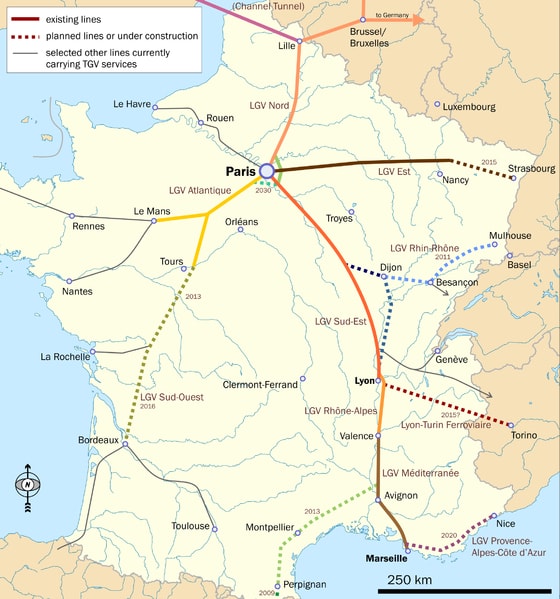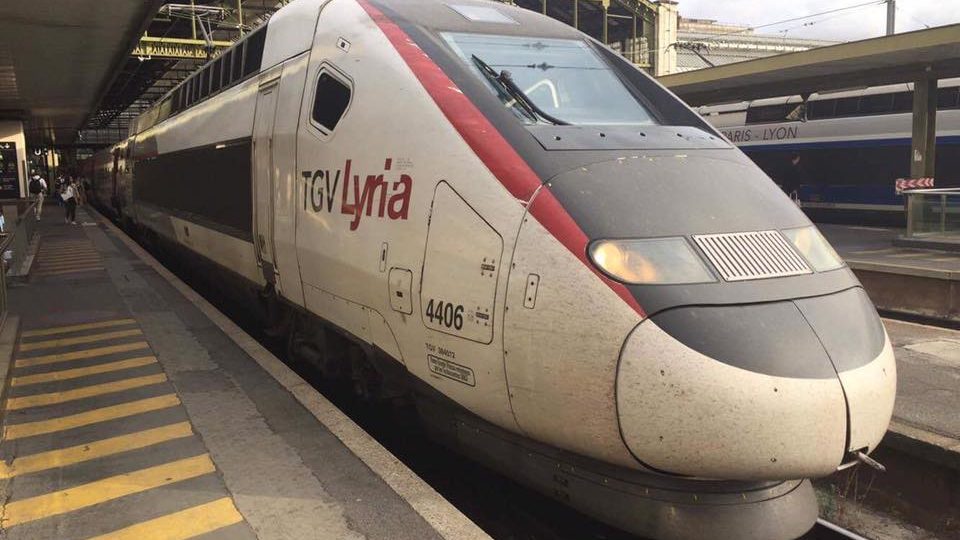TGV: France’s High-Speed Train
Whether you’ve been to France or are planning your trip, chances are you have probably heard of the TGV – Train à Grande Vitesse, or high-speed train – that links many major French cities. The TGV, which ran its inaugural service from Paris to Lyon in 1981, gets you from point A to point B remarkably fast – and it is the fastest way to travel across France (unless you have a car that can travel over 170pmh and circumvent traffic jams).
The TGV is run by SNCF (Société Nationale des Chemins de Fer Français, the French national rail operator) and today not only connects the major cities of France to one another but also to the neighboring countries of Luxembourg, Switzerland, Germany, and Belgium. Service is also offered from Brussels and Geneva to Avignon, Marseille, Lyon, and Nice.
TGV trains are the ideal way to get around France, as the high-speed trains connect Paris to over 200 cities in-country – such cities as Avignon, Dijon, Lyon, and Rennes.

TGV Vs. Air Travel
It is often much faster to travel by train than by air within France. Plus, because the TGV often departs from train stations located in city centers, it is more convenient than finding transportation to and from airports. Also, the TGV leaves from and arrives in train stations that are connected to other rail routes – meaning that even if the TGV does not travel to your desired destination, you’ll be able to connect on a regional train easily.
Within France, the TGV network is being expanded constantly, so more and more cities will be linked by this fast mode of transport. And, the success of the French TGV has lead to similar networks in other European countries. High-speed trains link Switzerland through the French network; Belgium, the Netherlands, and Germany are linked through the Thalys network, while the Eurostar links France to the United Kingdom and Belgium via the chunnel.
Finally, with low-cost airlines offering seemingly better prices than TGV tickets, you may be tempted to fly versus forking over the extra cash for the train ticket. However, the convenience, ease, and speed of taking the train is often well worth the extra cost of the ticket. Plus, once you factor in baggage and other hidden fees as well as transportation costs to and from the airport, it may actually be cheaper to take the TGV than fly.
Let’s review why the TGV is easier than taking a plane:
- Shorter travel times
- No check-in deadline
- No security delays
- Reduced boarding formalities
- Convenient locations of stations right in the heart of the cities
- Safe mode of transport
Taking the TGV versus Renting a Car in France
Many people dream of their vacation to France being a slow meander across the country, stopping at small villages along the way and traveling mostly via backroads. For this kind of travel, renting a car in France is the perfect idea. But, consider this: a trip from Paris to Marseille, which is a distance of a little over 400 miles as the crow flies, on the TGV takes three hours and 15 minutes and averages about €57 per ticket. If you were to drive – over 480 miles of roadways – it would take you twice that time. At a consistent 75mph speed. With no potty breaks, traffic, or, you know, slowing down at all. And would cost roughly €200 in gas and tolls. Plus, your rental car rate. Just sayin’.
TGV Tickets and Pricing
The TGV allows you to book travel up to 60 days in advance, though unlike with flying, it is usually very easy to buy your train ticket just days, or even minutes before you plan to travel. For those with uncertain itineraries, this makes the TGV an ideal mode of transport.
Just like airline tickets, pricing on TGV fares vary depending on a variety of factors. If you are planning on doing a lot of train travel in France or Europe, you also may want to consider getting a Eurail pass.
